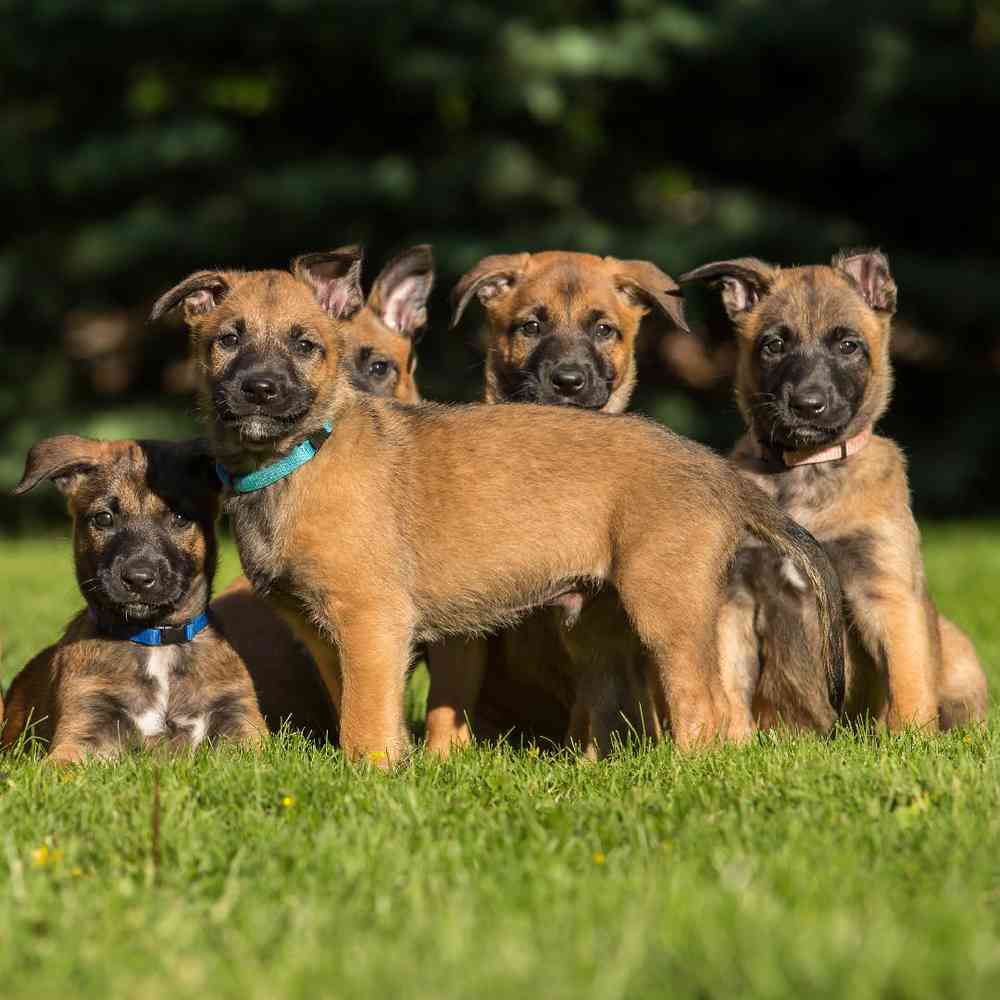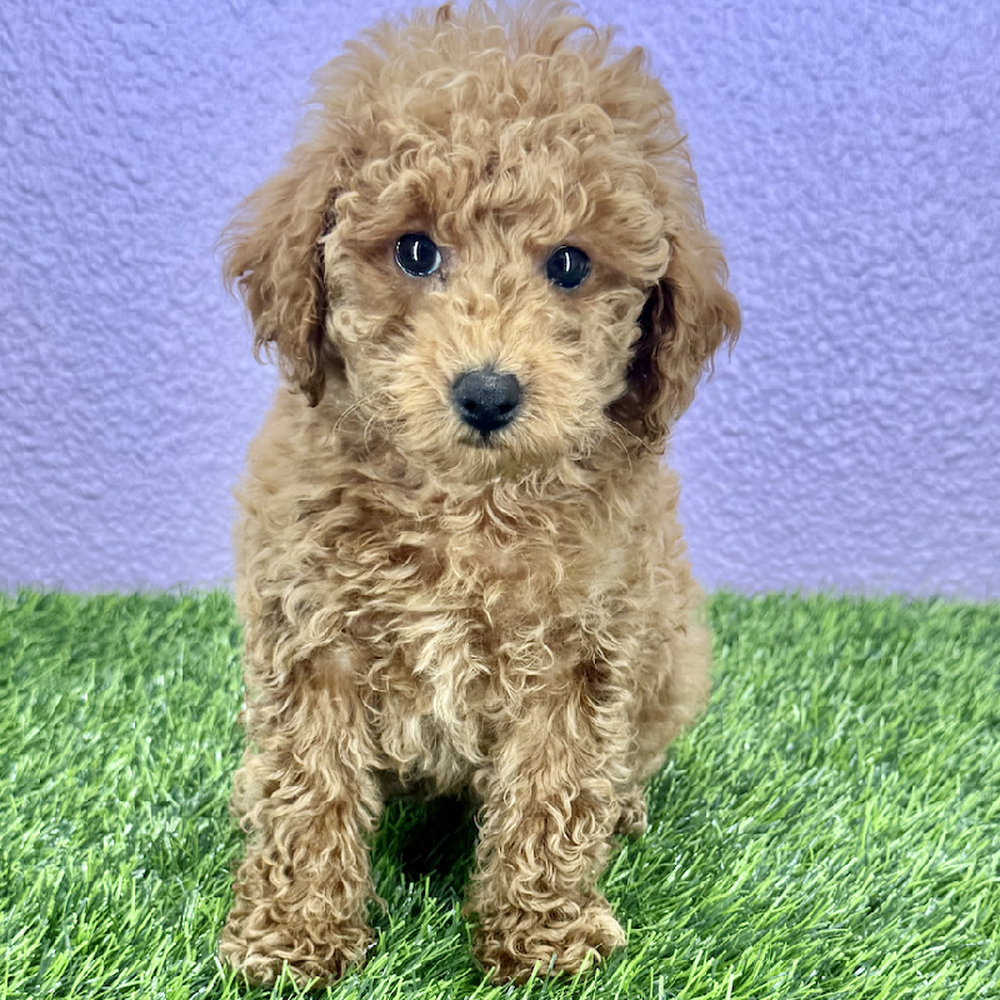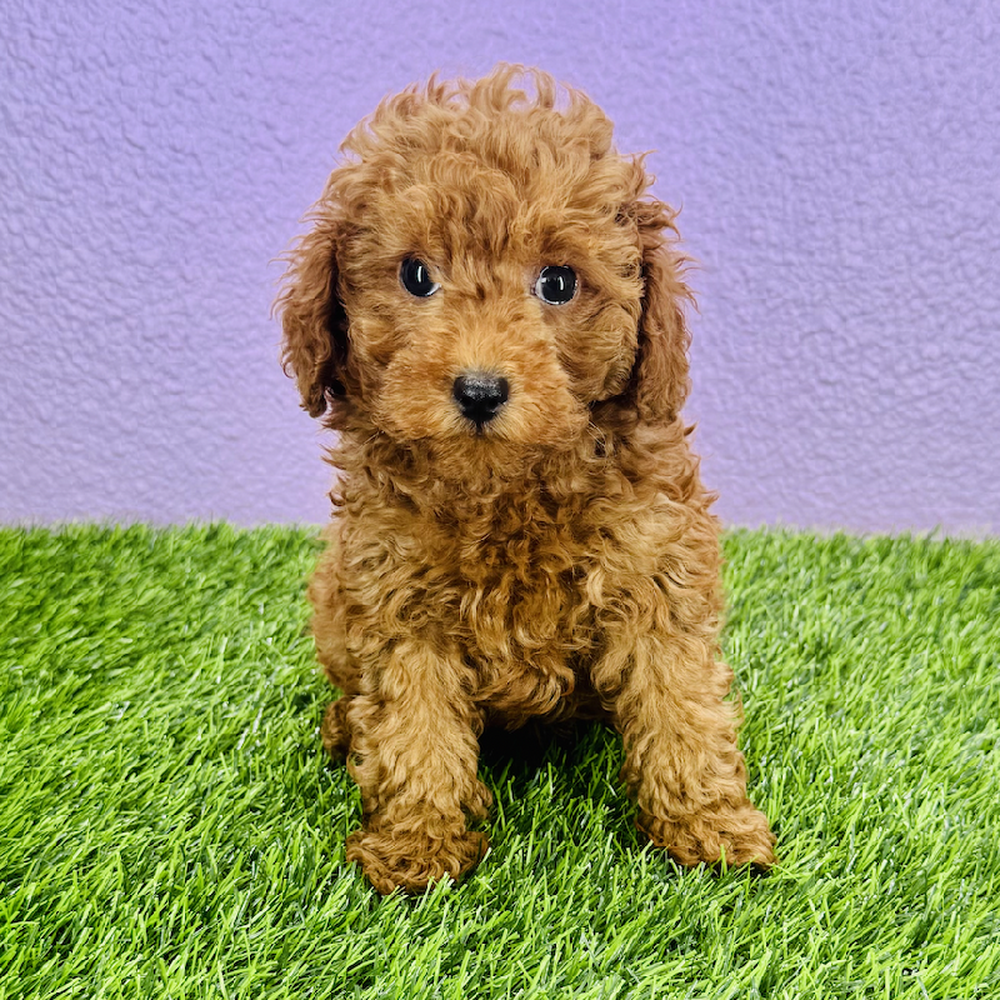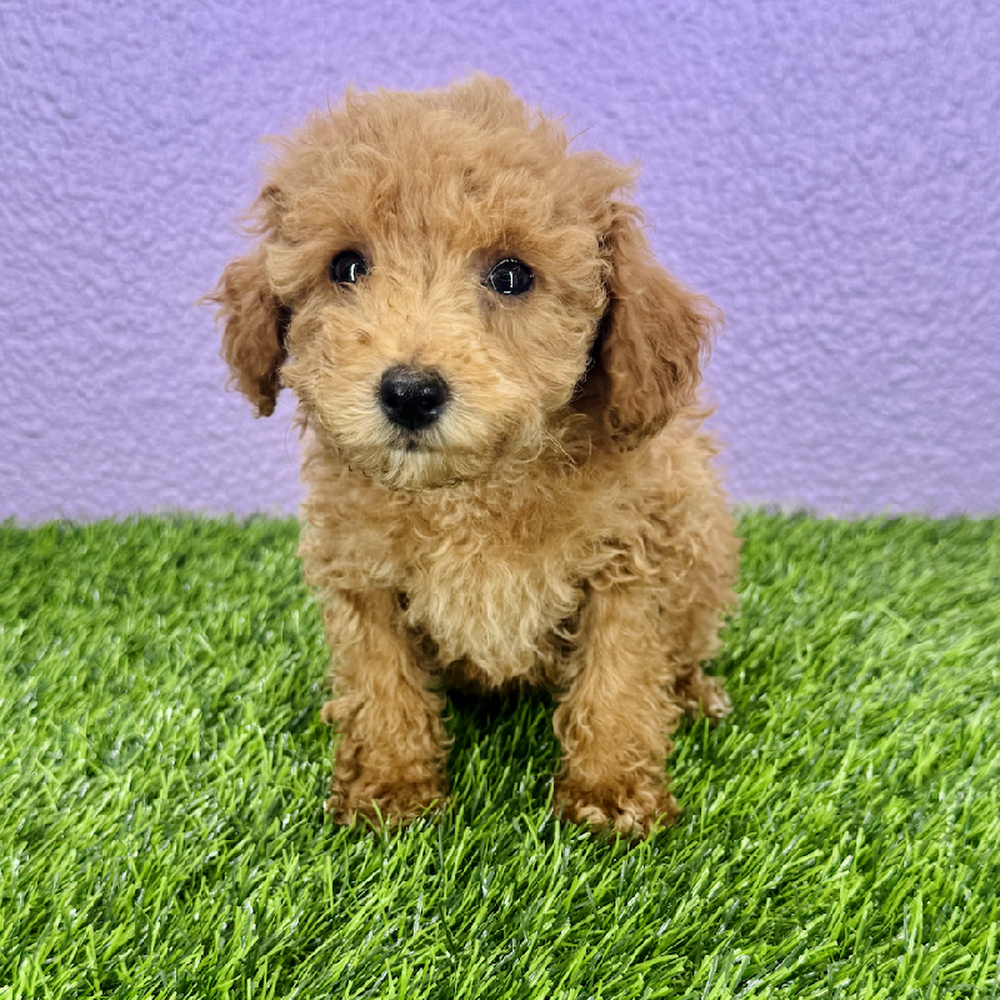Belgian Shepherd

Belgian Shepherd
The Belgian Shepherd is a highly trainable herder whose versatiltity and intelligence is the stuff of canine legend. This is a breed built for hardwork and plenty of it. These sensitive souls crave human companionship and abhor neglect.
Available Puppies
All our Pets have found their homes. Please enter your contact information below so we can get in touch with you when we have found the perfect Pets for your family.
Breed Standard
General Appearance
The first impression of the Belgian Sheepdog is that of a well balanced, square dog, elegant in appearance, with an exceedingly proud carriage of the head and neck. He is a strong, agile, well-muscled animal, alert and full of life. His whole conformation gives the impression of depth and solidity without bulkiness. The male dog is usually somewhat more impressive and grand than his female counterpart. The bitch should have a distinctly feminine look.
Head
Clean-cut and strong, overall size should be in proportion to the body. Expression indicates alertness, attention, readiness for activity. Gaze should be intelligent and questioning. Eyes brown, preferably dark brown. Medium size, slightly almond shaped, not protruding. Ears triangular in shape, stiff, erect, and in proportion to the head in size. Base of the ear should not come below the center of the eye. Ears hanging (as on a hound) shall disqualify. Skull – Top flattened rather than rounded. The width approximately the same, but not wider than the length. Stop moderate. Muzzle moderately pointed, avoiding any tendency to snipiness, and approximately equal in length to that of the topskull. The jaws should be strong and powerful. Nose black without spots or discolored areas. The lips should be tight and black, with no pink showing on the outside. Teeth – A full complement of strong, white teeth, evenly set. Should not be overshot or undershot. Should have either an even bite or a scissors bite.
Body
Neck round and rather outstretched, tapered from head to body, well muscled, with tight skin. Topline – The withers are slightly higher and slope into the back, which must be level, straight, and firm from withers to hip joints. Chest not broad, but deep. The lowest point should reach the elbow, forming a smooth ascendant curve to the abdomen. Abdomen – Moderate development. Neither tucked up nor paunchy. The loin section, viewed from above, is relatively short, broad and strong, but blending smoothly into the back. The croup is medium long, sloping gradually. Tail strong at the base, bone to reach hock. At rest the dog holds it low, the tip bent back level with the hock. When in action he raises it and gives it a curl, which is strongest toward the tip, without forming a hook. Cropped or stump tail shall disqualify.
Forequarters
Shoulder long and oblique, laid flat against the body, forming a sharp angle (approximately 90 degrees) with the upper arm. Legs straight, strong and parallel to each other. Bone oval rather than round. Development (length and substance) should be well proportioned to the size of the dog. Pastern medium length, strong, and very slightly sloped. Feet round (cat footed), toes curved close together, well padded. Nails strong and black, except that they may be white to match white toe tips.
Coat
The guard hairs of the coat must be long, well fitting, straight and abundant. They should not be silky or wiry. The texture should be a medium harshness. The undercoat should be extremely dense, commensurate, however, with climatic conditions. The Belgian Sheepdog is particularly adaptable to extremes of temperature or climate. The hair is shorter on the head, outside of the ears, and lower part of the legs. The opening of the ear is protected by tufts of hair.
Hindquarters
Legs – Length and substance well proportioned to the size of the dog. Bone oval rather than round. Legs are parallel to each other. Thighs broad and heavily muscled. The upper and lower thigh bones approximately parallel the shoulder blade and upper arm respectively, forming a relatively sharp angle at stifle joint. The angle at the hock is relatively sharp, although the Belgian Sheepdog does not have extreme angulation. Metatarsus medium length, strong and slightly sloped. Dewclaws, if any, should be removed. Feet slightly elongated. Toes curved close together, well padded. Nails strong and black, except that they may be white to match white toe tips.
Temperament
Belgian Shepherds should show traits of intelligence, courage, alertness and devotion to master/loyalty.
Overview
Grooming
The Belgian Sheepdog’s double-layer coat, consisting of a dense undercoat and a harder outer coat, is quite easy to take care of — as long as it’s not shedding season. For most of the year, all a Belgian requires is a weekly brushing. Baths can be infrequent unless the dog gets into something messy. At least once a year, though, Belgians shed heavily. When this happens, a thorough brushing every day is required to remove the surprisingly large amount of dead hair. As with all breeds, the Belgian’s nails should be trimmed regularly.
Group
Hearding
Exercise
Like so many of the Herding breeds, Belgian Sheepdogs require a good amount of exercise every day. And because the Belgian is a sensitive soul who craves human companionship, just letting him out in the backyard for a couple of hours is not enough. Owners should expect to participate in daily exercise sessions with their Belgians. This might mean playing with a ball or going for a long run, or it could also mean training for and participating in obedience, agility, tracking, or herding competitions, or canine sports such as flyball.
Training
Socialization and puppy-training classes are especially important. They promote good behavior, nip bad habits in the bud, and strengthen the bond between puppy and owner. Fortunately, Belgian Sheepdogs are very intelligent and want nothing more than to make their owners happy, so they take to training quickly.
Health
The Belgian Sheepdog is a robust, healthy breed. Responsible breeders will screen their breeding stock for health conditions such as epilepsy, elbow and hip dysplasia, eye issues such as progressive retinal atrophy and cataracts, and certain cancers. Should the need for surgery arise, note that Belgians are particularly sensitive to anesthesia. As with all breeds, a Belgian’s ears should be checked regularly for signs of infection, and the teeth should be brushed regularly. Recommended Health Tests from the National Breed Club: Hip Evaluation Elbow Evaluation Ophthalmologist Evaluation
Nutrition
The Belgian Sheepdog should do well on a high-quality dog food, whether commercially manufactured or home-prepared with your veterinarian’s supervision and approval. Any diet should be appropriate to the dog’s age (puppy, adult, or senior). Some dogs are prone to getting overweight, so watch your dog’s calorie consumption and weight level. Treats can be an important aid in training, but giving too many can cause obesity. Learn about which human foods are safe for dogs, and which are not. Check with your vet if you have any concerns about your dog’s weight or diet. Clean, fresh water should be available at all times.
History
Belgium’s climate and terrain are highly favorable for livestock and dairy farming, and the small but industrious country has always been self-sufficient in these commodities. Belgium has long been the world’s leading exporter of milk chocolate, a key component to the national economy. It should, then, come as no surprise that old-time Belgian farmers were preoccupied with cattle herding. This preoccupation included the breeding of herding dogs. In fact, there were once eight types of shepherd dogs unique to Belgium. By the 1890s, when they were officially classified for the first time, there remained the four we know today: The Belgian Sheepdog (aka Groenendael or Chien de Berger Belge), Malinois, Tervuren and Laekenois. They were anatomically identical but varied in coat textures, colors, and length. The name Groenendael was given to the longhaired black variety, today’s Belgian Sheepdog, thanks to Nicolas Rose, an important breeder of the 1890s who operated a restaurant near Brussels called the Chateau Groenendael. By the turn of the 20th century, the versatility and work drive of Belgian Sheepdogs were becoming known beyond the pastures of Belgium. Paris and New York used Belgian Sheepdogs as police dogs in this era. Customs agent employed them on border patrols, rooting out smugglers. During World War I, they distinguished themselves as messengers, ambulance dogs, and freighters of heavy gunnery. Belgian Sheepdogs reprised their role as war dogs during the Second World War. The Belgian Sheepdog Club of America was formed in 1949, and since then this noble breed has done it all: show dog, athlete, police officer, soldier, service dog, searcher and rescuer, watchdog, and tireless backyard tennis-ball fetcher.
About
The stirring silhouette of a Belgian Sheepdog conveys both elegance and muscular determination. A handsome feature of the breed is the exceedingly proud carriage of the head and neck. A male might stand 26 inches at the shoulder; females are smaller. The dark eyes sparkle with a questioning intelligence, and the black coat is abundant, from the neck’s “collarette” to the “breeches” of the hindquarters. In all ways, Belgian Sheepdogs are bright-eyed and bushy-tailed. In any sport or activity, a Belgian will always give 100 percent. In turn, owners tend to form a special bond with their eager workaholics. As one devotee puts it, Belgians “inspire such intense loyalty because they themselves live and love with such great passion.”



